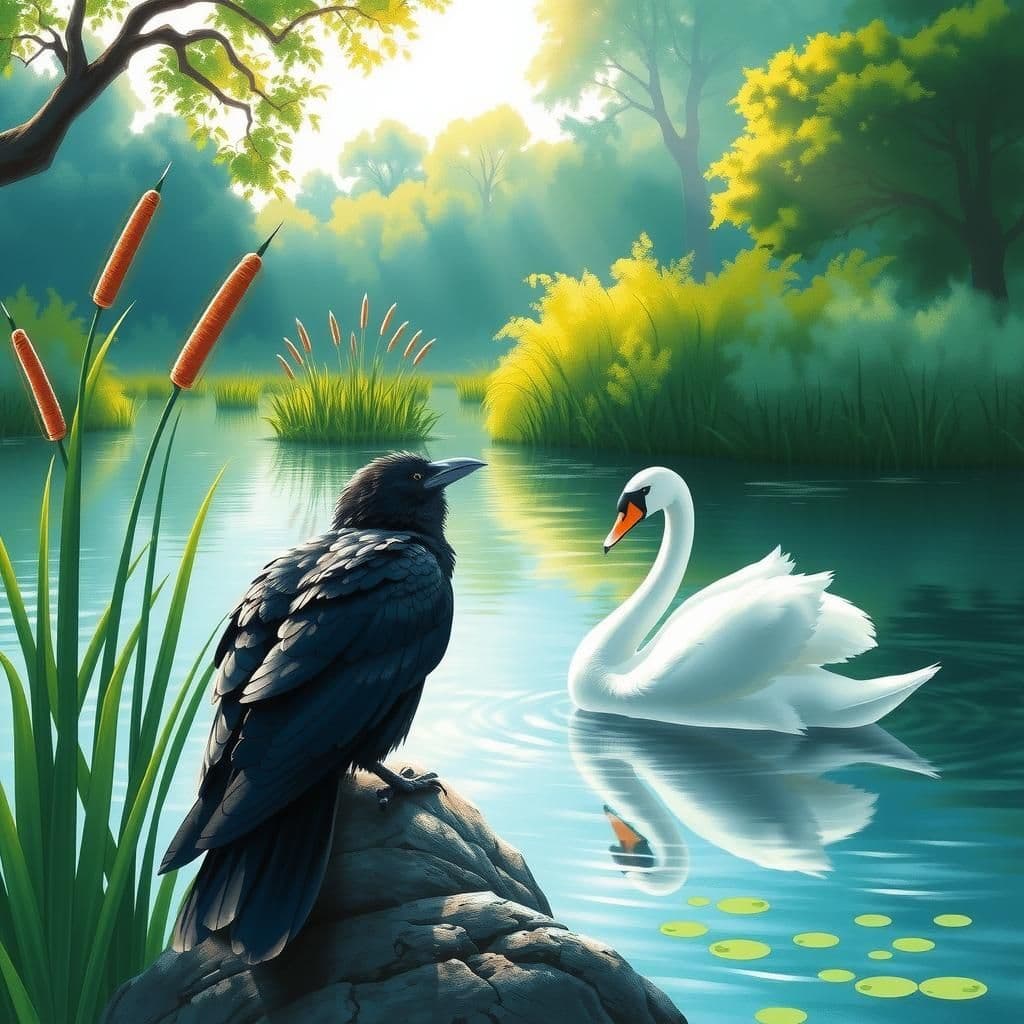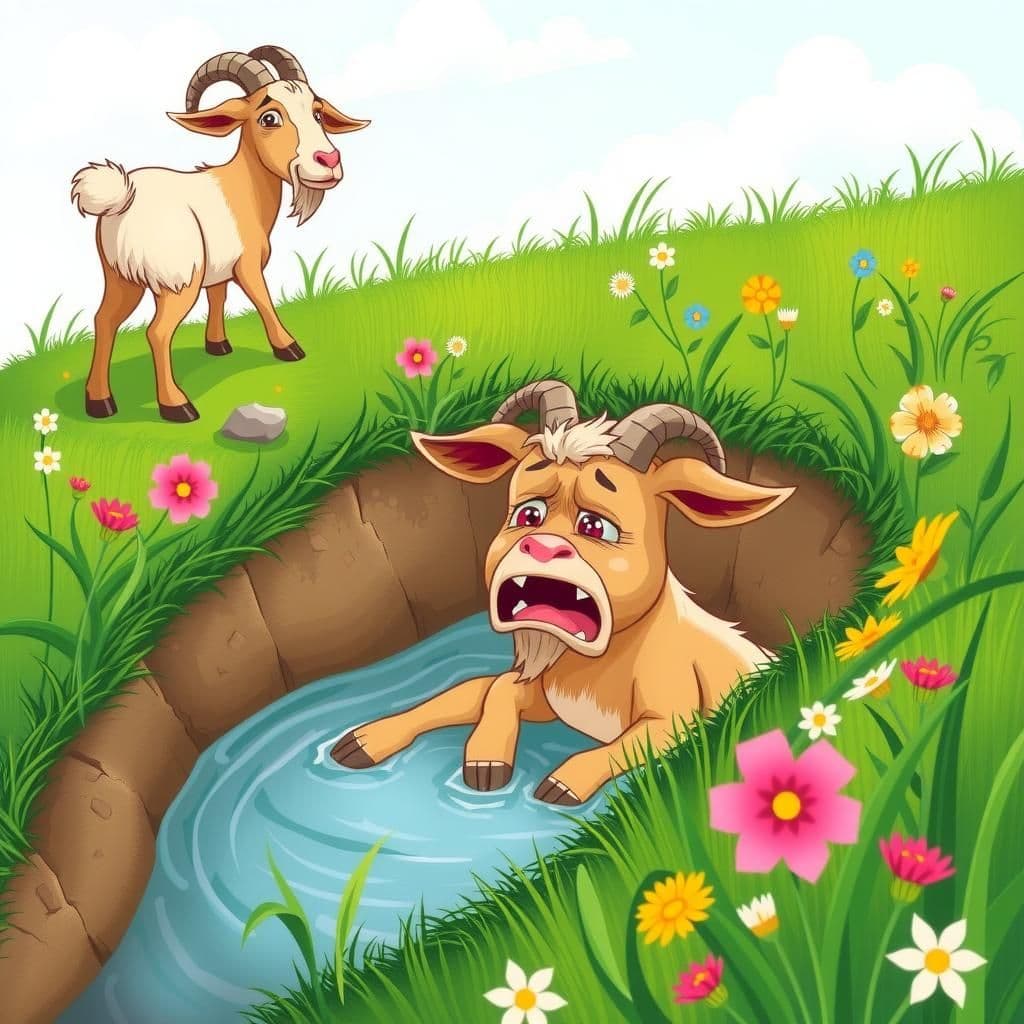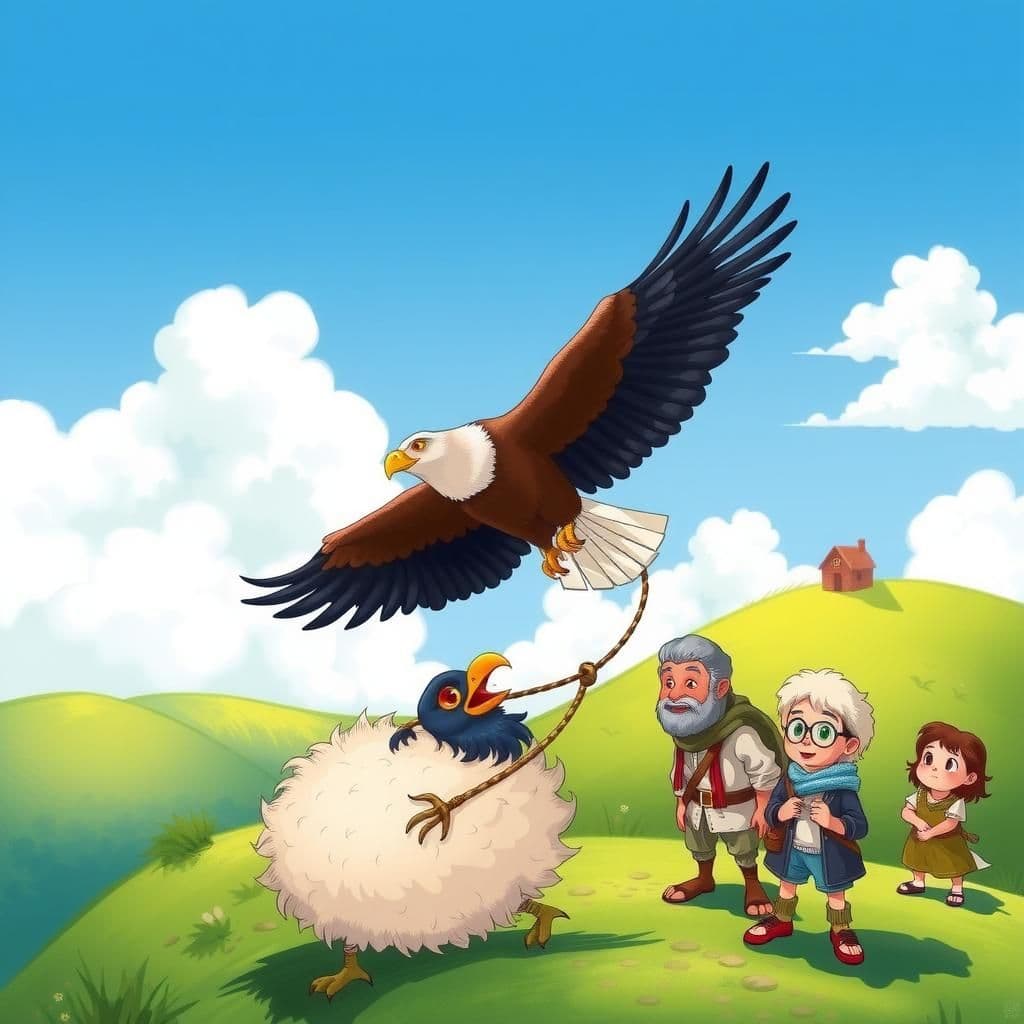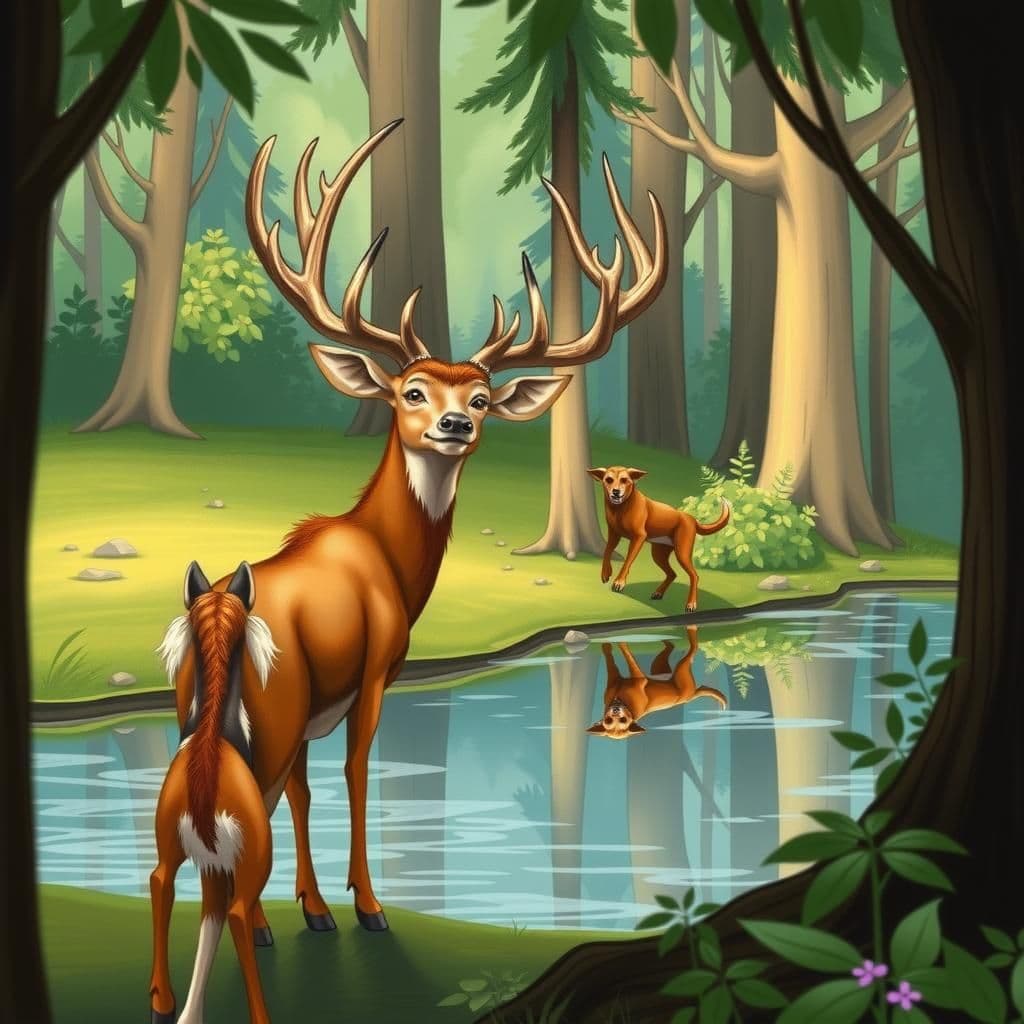The Raven and the Swan

Story Summary
In "The Raven and the Swan," a raven envies the swan's beautiful white feathers and mistakenly believes that washing in water will grant him the same appearance. This simple moral story illustrates that despite his efforts to change his habits, the raven cannot alter his inherent nature, ultimately leading to his demise from starvation. Such short and sweet moral stories remind us that true change comes from within, not from superficial actions.
Click to reveal the moral of the story
The moral of the story is that one cannot change their inherent nature by merely altering their environment or habits.
Historical Context
This fable, attributed to Aesop, reflects themes of envy and the futility of trying to change one's inherent nature. Originating in ancient Greece, Aesop's fables have been passed down through generations, often serving as moral lessons that critique human behavior. The story illustrates how desire for superficial attributes can lead to self-destruction, a common cautionary tale in various cultures.
Our Editors Opinion
This fable underscores the futility of trying to change one's inherent nature or identity in pursuit of superficial desires, a lesson that resonates in today's society where individuals often feel pressure to conform to unrealistic standards for success or beauty. For instance, a professional might abandon their authentic style and values to fit into a corporate culture that emphasizes a different appearance, ultimately leading to diminished self-worth and dissatisfaction, much like the Raven who lost both his health and identity.
You May Also Like

The Goat and the Ass
In "The Goat and the Ass," a story often shared as a childhood tale with moral lessons, a Goat envies the Ass for its better food and persuades it to pretend to be ill to escape hard labor. The Ass follows this misguided advice, injuring itself in a ditch, which ultimately leads to the Goat being killed to treat the Ass's wounds. This culturally significant moral story illustrates the dangers of envy and the consequences of poor decisions, making it a valuable lesson for kids and students alike.

The Eagle and the Jackdaw
In "The Eagle and the Jackdaw," a Jackdaw, envious of the Eagle's strength, attempts to capture a ram to prove his prowess, only to become ensnared in the fleece. Captured by a shepherd, the Jackdaw learns a valuable lesson: pretending to be something one is not can lead to humiliation. This easy small story imparts a quick moral about the importance of accepting one's true nature rather than envying others.

The Stag who Admired his Reflection
In this fable, a vain stag admires his beautiful antlers while lamenting his slender legs, believing the former to be more valuable. When a bloodhound pursues him, he discovers that his prized antlers hinder his escape, illustrating the simple moral that valuing beauty over utility can lead to one's downfall. This entertaining moral story serves as a reminder that what we often regard as beautiful may ultimately bring us strife, while the useful, though overlooked, is essential for survival.
Other names for this story
Feathers of Envy, The Color of Desire, Nature's Unchangeable Law, The Raven's Folly, Swan's Elegance, Beyond Black and White, The Illusion of Beauty, A Tale of Two Birds
Did You Know?
This fable illustrates the theme that one cannot fundamentally change their inherent nature or identity, no matter how much they may desire to emulate others. It serves as a cautionary tale about the dangers of envy and the futility of trying to attain qualities that are unattainable.
Subscribe to Daily Stories
Get a new moral story in your inbox every day.